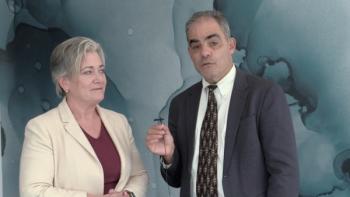
Optometry cochairs Kelly K. Nichols, OD, MPH, PhD, FAAO, and A. Paul Chous, OD, MA, FAAO, highlight the conference’s focus on collaboration, featuring topics like red flags for patient care, thyroid eye disease, and diabetes management.

Optometry cochairs Kelly K. Nichols, OD, MPH, PhD, FAAO, and A. Paul Chous, OD, MA, FAAO, highlight the conference’s focus on collaboration, featuring topics like red flags for patient care, thyroid eye disease, and diabetes management.
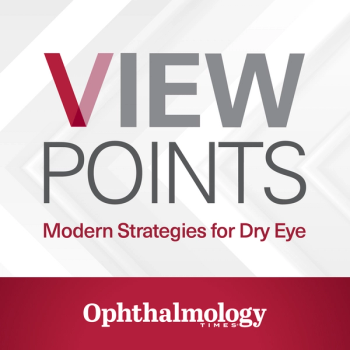
Bill B. Trattler, MD, Crystal Brimer, OD, Cynthia Matossian, MD, FACS, and Kelly K. Nichols, OD, MPH, PhD, discuss dry eye disease and the various approaches clinicians can take to treat the disease in part 4 of the Viewpoints Podcast.

Bill B. Trattler, MD, Crystal Brimer, OD, Cynthia Matossian, MD, FACS, and Kelly K. Nichols, OD, MPH, PhD, discuss dry eye disease and the various approaches clinicians can take to treat the disease in part 3 of the Viewpoints Podcast.

Bill B. Trattler, MD, Crystal Brimer, OD, Cynthia Matossian, MD, FACS, and Kelly K. Nichols, OD, MPH, PhD, discuss dry eye disease and the various approaches clinicians can take to treat the disease in the second part of the Viewpoints Podcast.

In this podcast, Bill B. Trattler, MD, Crystal Brimer, OD, Cynthia Matossian, MD, FACS, and Kelly K. Nichols, OD, MPH, PhD, discuss dry eye disease and the various approaches clinicians can take to treat the disease.
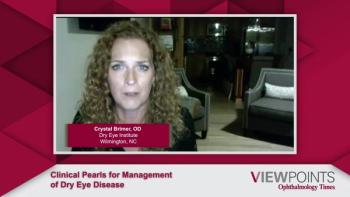
Experts conclude their discussion sharing clinical peals on the management of dry eye disease (DED) and how providers may invest in their practice to better screen and treat their patients.
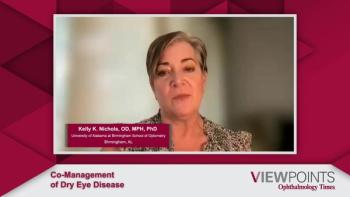
Experts discuss their clinical approaches for co-managing patients with dry eye disease and how they educate patients and their providers about the disease.
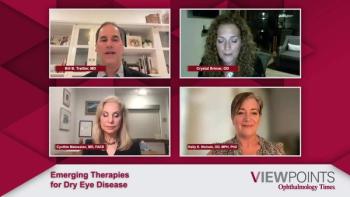
Crystal Brimer, OD, and Kelly K. Nichols, OD, MPH, PhD, discuss two treatments, AZR-MD-001 and Reproxalap, that are in the pipeline to treat patients with dry eye disease (DED).
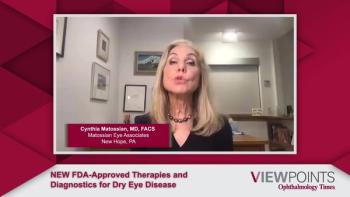
Cynthia Matossian, MD, FACS, and Kelly K. Nichols, OD, MPH, PhD, discuss three new FDA-approved therapies for the treatment of dry eye disease (DED).
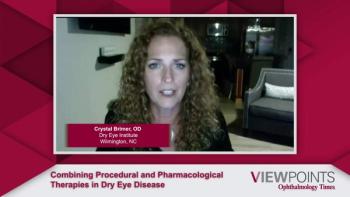
Experts offer their clinical expertise on managing patients with dry eye disease (DED) with concurrent procedural and pharmacological therapies and the importance of individualized care.
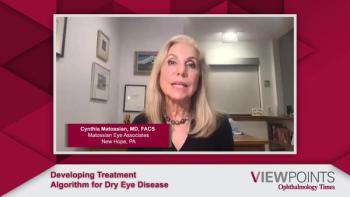
Cynthia Matossian, MD, FACS, provides her clinical advice on developing a treatment algorithm for patients with dry eye disease (DED).
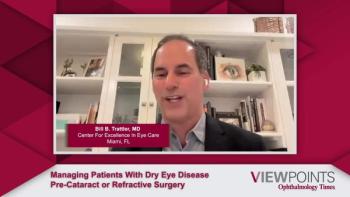
Kelly K. Nichols, OD, MPH, PhD, and Crystal Brimer, OD, provide their clinical advice on managing patients with overlapping eye diseases that need surgical treatment.
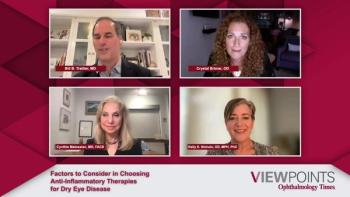
Experts discuss key factors to consider when using anti-inflammatory agents to treat dry eye disease (DED).
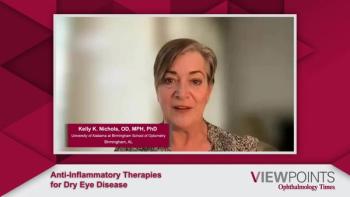
Kelly K. Nichols, OD, MPH, PhD, discusses various anti-inflammatory treatment options for dry eye disease (DED), such as cyclosporine, lifitegrast, and varenicline. In addition, Cynthia Matossian, MD, FACS, provides an overview of the mechanism of action of lifitegrast and how it differs from cyclosporine.
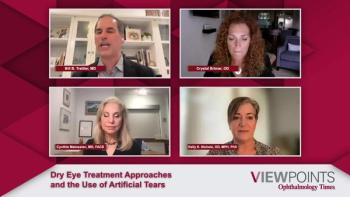
Experts discuss various treatment approaches for patients with dry eye disease (DED). They also highlight the challenges and drawbacks of using artificial tears to treat DED.
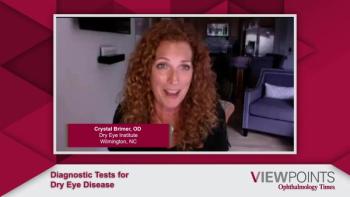
Bill B. Trattler, MD, Crystal Brimer, OD, Cynthia Matossian, MD, FACS, and Kelly K. Nichols, OD, MPH, PhD, discuss their preferred clinical diagnostic tools and tests to evaluate patients for dry eye disease (DED) and strategies for educating patients on their results.
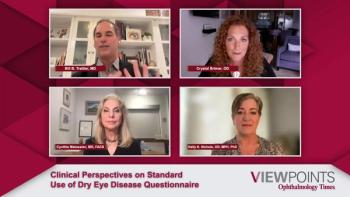
Experts offer their clinical perspectives on the use of dry eye questionnaires as a method of screening for dry eye disease (DED).
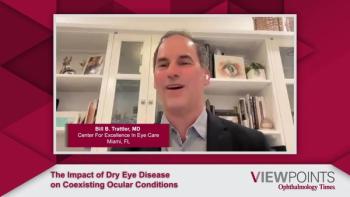
Experts discuss the impact of dry eye disease (DED) on coexisting ocular conditions and their clinical experience managing these patients.
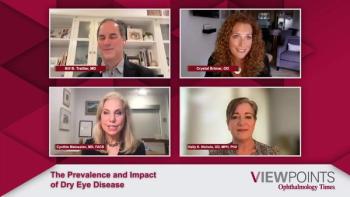
Bill B. Trattler, MD, Crystal Brimer, OD, Cynthia Matossian, MD, FACS, and Kelly K. Nichols, OD, MPH, PhD, discuss the prevalence of dry eye disease (DED) and how it can impact the quality of life for patients.
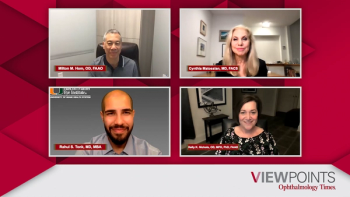
Unique clinical trials and novel products of interest currently under investigation for the treatment of dry eye disease.

A panel of ophthalmologists and optometrists conclude a discussion about dry eye disease by commenting on advances occurring in the field and future expectations for managing patients.

Strategies that can help eye care specialists work with patients to establish and stick to treatment plans for dry eye disease.

Types of in-office procedures currently being used by ophthalmologists and optometrists to aid in the treatment of dry eye disease.

Eye care specialists describe when corticosteroid therapy should be considered to treat dry eye disease and describe best practices when treating pre-surgical patients.

The most common types of artificial tears recommended to help manage dry eye disease and the importance of proper use for full benefit.

Eye care professionals discuss their comfort in recommending oral omega-3 fatty acids to help treat dry eye disease.

How to select and discuss sequential therapy with patients who have dry eye disease and set expectations for treatment.

Resources and strategies that can be used to help educate patients about dry eye disease and optimize adherence to therapy.

Criteria that would prompt further evaluation for dry eye disease and the types of tests used to work-up and accurately diagnose the condition.

Eye care professionals explain the impact of unstable tear film and untreated dry eye disease on patient quality of life.
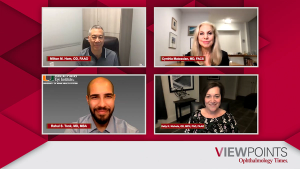
Published: April 30th 2021 | Updated:

Published: June 7th 2021 | Updated:

Published: May 10th 2021 | Updated:

Published: June 7th 2021 | Updated:

Published: May 24th 2021 | Updated:

Published: May 17th 2021 | Updated: